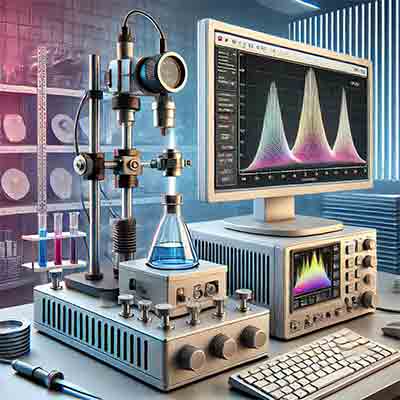I would like to know if you have single crystal quartz wafers with 200 µm thickness or even thinner. It must be transparent for X-rays. We intend to use as a window in a thermal reactor to be used in an X-ray Absorption Spectroscopy (XAS) for in situ analysis.
Substrates Used for Absorption Spectroscopy (XAS)
Quartz Wafers for Absorption Spectroscopy (XAS)
An assistant professor requested a quote for the following.
Reference #272710 for specs and pricing.
Get Your Quote FAST! Or, Buy Online and Start Researching Today!
Commonly Used Substrate Used for Absorption Spectroscopy
- Ultraviolet-Visible (UV-Vis) Spectroscopy
- Diameter: 100 mm
- Type: Intrinsic (Undoped)
- Dopant: None
- Ori: <100>
- Polish: Double-side polished
- Thickness: 500 µm
- Grade: Prime
- Resistivity: >10,000 Ω·cm
What is Absorption Spectroscopy?
Absorption Spectroscopy is an analytical technique used to measure the amount of light absorbed by a sample as a function of wavelength or frequency. This technique is based on the principle that atoms, molecules, or ions absorb light at specific wavelengths, leading to electronic transitions between energy levels.
Key Points:
-
Principle:
- When light passes through a sample, some wavelengths are absorbed by the sample's
 atoms or molecules.
atoms or molecules. - The absorbed light corresponds to the energy required for electronic transitions from a lower energy state to a higher energy state.
- When light passes through a sample, some wavelengths are absorbed by the sample's
-
Types of Absorption Spectroscopy:
- Ultraviolet-Visible (UV-Vis) Spectroscopy: Measures absorption in the ultraviolet and visible regions of the electromagnetic spectrum (typically 200-800 nm).
- Infrared (IR) Spectroscopy: Measures absorption in the infrared region (typically 2.5-25 µm or 4000-400 cm^-1), which is associated with vibrational transitions in molecules.
- X-ray Absorption Spectroscopy (XAS): Measures absorption of X-rays, providing information about the electronic structure and local environment of specific elements within a sample.
-
Applications:
- Quantitative Analysis: Determining the concentration of a particular substance in a mixture by measuring the amount of light absorbed.
- Qualitative Analysis: Identifying substances based on their characteristic absorption spectra.
- Structural Analysis: Providing information about the molecular structure and electronic states of a sample.
-
Instrumentation:
- Light Source: Provides the light that passes through the sample (e.g., deuterium lamp for UV, tungsten lamp for visible, and Globar for IR).
- Sample Holder: Holds the sample in a suitable form (e.g., liquid, gas, or solid).
- Monochromator: Isolates specific wavelengths of light to pass through the sample.
- Detector: Measures the intensity of light before and after passing through the sample to determine the absorbance.
-
Data Output:
- Absorption spectra are plotted as absorbance (or transmittance) versus wavelength (or frequency).
- Peaks in the absorption spectrum correspond to specific electronic transitions and can be used to identify and quantify the sample's components.
Absorption spectroscopy is widely used in chemistry, biology, physics, and environmental science for various analytical applications due to its sensitivity and specificity.
